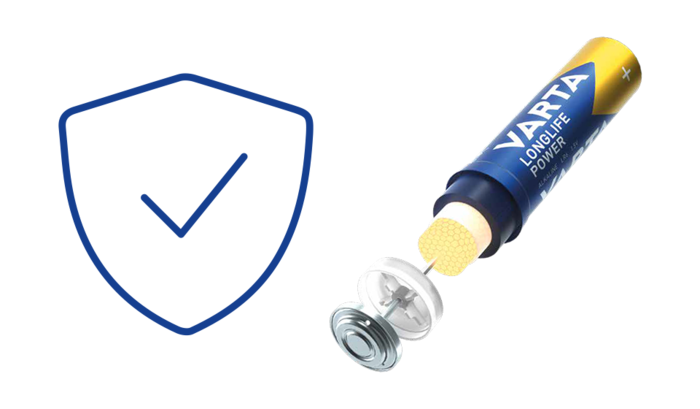What happens when a battery leaks?
In very rare cases, it can happen: A liquid suddenly leaks from the remote control or another battery-powered device. This can even happen with unused batteries. Which batteries are the safest? And how should you act if batteries leak in a device?
Why do batteries leak?
Batteries that are leaking at the end of their life cycle are mainly outdated zinc-based primary batteries that are still commercially available (so-called zinc-carbon or zinc-chloride batteries).
But why is the liquid leaking from the battery?
There can be two reasons for this:
- One reason is the zinc in the zinc-carbon battery. In a cup shape, the zinc surrounds the battery. However, the zinc degrades over time. If a discharge takes place through the use of the battery, the exterior of the battery, the zinc, is attacked, which can cause a leak. The battery fluid can leak through this leak.
- Secondly, the electrolyte attacks the outer zinc even when the battery is not in use. Moreover, if the battery is already very used up, the electrolyte can easily eat its way through the empty negative terminal. After a long time in the unit, the electrolyte in the battery may leak out.


We put safety first!
The alkali-manganese cell has displaced the zinc-carbon cell from most applications due to its higher capacity, higher safety against leakage, better resilience and longer storage life. That is why we at VARTA focus on safety and mainly produce alkaline manganese primary batteries.
The advantage of these batteries is that the electrodes are inside a steel container. At the open end of the steel container, alkaline manganese batteries have a synthetic seal to prevent leaking. In addition, a liquid sealant is applied between the container and the seal to cover minute irregularities in the steel surface. During use or storage of the batteries, the steel cannot be attacked by the electrolyte or electrodes. This is achieved through special refining (coating) of the steel.
How to treat a primary battery
DO - insert the batteries properly
Follow the symbols showing the correct way to position the positive and the negative ends of the batteries.
DO NOT - Do not remove a cell or battery from its original packaging until required for use
Avoid contact between batteries and metal objects. Don’t carry loose batteries in a pocket or purse with metal objects like coins, paper clips, etc. This can short-circuit the battery, leading to high heat or leakage.
DO - immediately remove exhausted batteries from your device and dispose of properly
DO NOT - mix old and new batteries
Don’t mix old and new batteries, or mix different types or brands of batteries. This can cause leakage or rupture.
DO - ensure proper battery storage
Practice proper battery storage by keeping batteries in a cool, dry place at normal room temperature. It is not necessary to store batteries in a refrigerator.
DO NOT - attempt to recharge a primary battery
This could cause overheating or leakage.
DO - remove the batteries from the device if they are not used for several months
Remove the batteries from the unit when they are no longer in use for several months to prevent leakage due to deep discharge. Many devices don’t power off completely when switched off and, after time, may cause the batteries inside to leak.
What if the battery leaks anyway?
- If they are unusually warm, have a strange smell, are discolored or disfigured in any way, the batteries are defective.
- If salts have formed on the battery, this is what is blocking the contacts and the battery should be disposed of properly.
- If battery fluid has escaped from the battery, the battery compartment and the contacts of the switched off and unplugged device can be cleaned with a damp cloth.
- If batteries have leaked on you, you should remove it and wash your hands thoroughly if they have come into contact with your skin.


